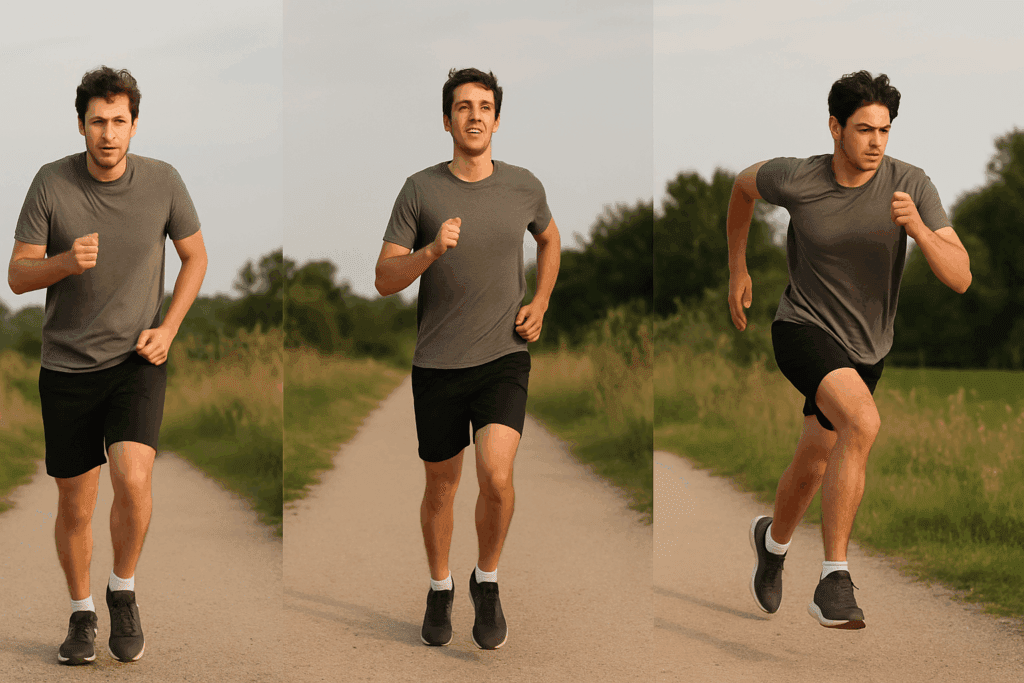Understanding the Role of Cardio in Modern Fitness and Health
Cardiovascular exercise, often shortened to cardio, has long been recognized as a cornerstone of physical fitness and overall health. Its benefits extend far beyond calorie burning or weight management. From enhancing heart health to improving mental clarity, cardiovascular workouts support the body in holistic ways. But one of the most common questions fitness professionals hear is: Is 30 minutes of cardio a day enough? With busy schedules and growing awareness of sedentary lifestyles, many individuals aim to balance minimal time investment with maximum health return.
The conversation around cardio has evolved significantly over the past decade. No longer is it viewed solely through the lens of aerobic endurance. Instead, cardio is now considered critical for long-term stamina, metabolic efficiency, and even cognitive health. Still, many wonder how much cardio per week is truly necessary and whether a 30-minute daily session strikes the right balance. To answer these questions comprehensively, we must evaluate not only the scientific evidence but also practical considerations, individual health goals, and the different forms that cardio can take.
You may also like: How to Increase Stamina and Endurance Naturally: Smart Training Tips and Nutrition Habits That Support Cardiovascular Fitness

How Much Cardio Per Week Do Experts Recommend?
To understand whether 30 minutes of cardio daily is sufficient, it’s essential to first examine official health guidelines. The American Heart Association and the World Health Organization both recommend at least 150 minutes of moderate-intensity or 75 minutes of vigorous-intensity aerobic activity per week for adults. This baseline translates to about 30 minutes of moderate cardio five days a week, which aligns closely with the popular model of daily 30-minute sessions.
However, it’s worth noting that these guidelines serve as a minimum threshold for general health, not necessarily optimal performance. For individuals looking to increase endurance, enhance athletic ability, or manage chronic health conditions like hypertension or diabetes, exceeding these recommendations may provide additional benefits. So while 30 minutes cardio daily can certainly support foundational cardiovascular health, it may not always be sufficient for more advanced fitness goals or competitive performance.
Another important consideration is the intensity and type of cardio performed. A brisk walk, a spin class, and a HIIT session all fall under the umbrella of cardio, yet they produce vastly different physiological effects. Therefore, the question of how long should a cardio workout be must be evaluated in context—not just by time, but also by effort and intent.

Evaluating the Effectiveness of 30 Minutes Cardio Daily
For many people, the appeal of a 30-minute cardio routine lies in its feasibility. It’s long enough to be effective but short enough to fit into a lunch break or early morning routine. Numerous studies have shown that even short, consistent bouts of moderate-intensity cardio can lower blood pressure, reduce LDL cholesterol, and improve insulin sensitivity.
The key lies in consistency and cumulative impact. Assuming you participate in 30 minutes or less physical activity per day, maintaining a regular cardio routine can still yield significant improvements in aerobic capacity and metabolic health. Over time, this routine can boost mitochondrial efficiency, leading to better energy production and reduced fatigue during daily tasks or workouts.
Moreover, when performed with intention—such as maintaining a target heart rate zone or alternating between moderate and vigorous intensities—30 minutes of cardio a day can replicate the benefits of longer sessions. Interval training, in particular, has been found to optimize cardiovascular improvements and fat oxidation in less time than traditional steady-state exercise. The effectiveness of cardio exercise 30 minutes a day, then, hinges on more than just duration. It’s about how that time is spent.

Cardio and Endurance: Building Stamina Over Time
Endurance training is one of the primary goals for those engaging in regular cardio. Whether training for a marathon or simply hoping to climb stairs without getting winded, stamina plays a pivotal role in physical capability and quality of life. But can a consistent, relatively short session build meaningful endurance?
Research suggests that 30-minute cardio daily routines can indeed improve endurance, particularly for beginners or those returning from inactivity. The body adapts to regular cardiovascular stimulus by enhancing oxygen delivery, increasing capillary density, and strengthening the heart muscle. These adaptations collectively support improved stamina and delayed fatigue.
However, for more experienced athletes, simply maintaining a 30-minute session may not be enough to induce progressive improvements. In such cases, increasing intensity, incorporating longer sessions weekly, or periodizing the workout plan may be necessary. Understanding how much cardio per week is needed for endurance, therefore, depends on baseline fitness and progression goals.
Importantly, stamina is not just physical—it has a mental component. Regular cardio builds mental toughness, improves mood, and enhances resilience under stress. These psychological benefits further empower individuals to push through physical barriers, making endurance both a physiological and psychological achievement.
Performance Enhancement: Going Beyond the Basics
While cardiovascular health and endurance are crucial, many individuals are also interested in how cardio supports broader performance goals. These might include speed, agility, power, or recovery time. So how long should a cardio workout be for enhancing athletic performance?
The answer again lies in specificity. Athletes often use cardio strategically: short, intense bursts to develop speed, or longer, low-intensity sessions to build aerobic efficiency. For those in strength-focused disciplines, cardio helps improve circulation and recovery, while reducing the risk of overtraining by supporting active rest.
In the context of 30 minutes cardio daily, targeted programming can yield measurable performance gains. High-intensity interval training (HIIT), sprint interval training (SIT), or even zone-based endurance rides can be structured within a 30-minute frame to enhance VO2 max, lactate threshold, and muscular efficiency. Performance enhancement doesn’t always require hours of work—just smart programming.
For example, runners looking to shave time off a 10K may benefit more from 30 minutes of structured intervals than an hour of slow jogging. Similarly, basketball players might improve their in-game stamina and speed with condensed, sport-specific conditioning routines. Thus, daily cardio can contribute meaningfully to performance, provided it’s tailored to the individual’s athletic demands.

When Is 30 Minutes Not Enough? Tailoring to Individual Needs
While many will thrive on a cardio exercise 30 minutes a day routine, it’s important to recognize situations where more may be needed. Individuals training for endurance races, managing weight loss plateaus, or seeking rehabilitation from cardiovascular events might require a more robust regimen. In such cases, increasing either the duration, frequency, or intensity of cardio sessions can yield better outcomes.
Additionally, lifestyle factors play a role. For example, someone with a desk job who is otherwise sedentary may need additional movement throughout the day, even if they hit their 30-minute cardio target. Simply assuming you participate in 30 minutes or less physical activity outside of exercise suggests a need for increased incidental activity—walking meetings, standing desks, or active commuting can help bridge the gap.
Other factors, such as age, sex, and medical history, also influence ideal cardio prescriptions. Post-menopausal women may benefit from longer low-impact sessions to support bone density, while individuals recovering from heart surgery might follow carefully monitored programs that slowly exceed the 30-minute threshold. In short, while 30 minutes is a solid starting point, personalization remains key.
Time for Cardio: Best Practices for Maximizing Results
Time management is a major consideration for many when designing a workout routine. Making time for cardio consistently can feel challenging in fast-paced lifestyles. However, success often lies in creating structured, sustainable habits. Integrating cardio at a consistent time each day—whether it’s a morning jog or a post-work spin class—can help establish a rhythm and reduce decision fatigue.
Moreover, understanding your body’s natural rhythm can guide optimal time for cardio. Some individuals perform best in the morning, leveraging fasted workouts to kickstart metabolism. Others find evening cardio helps them decompress and manage stress after a busy day. There is no universally “best” time; rather, the best time is the one you can stick to consistently.
Efficiency also matters. Pairing cardio with mobility work, strength circuits, or functional movement patterns can amplify benefits without increasing time demands. Technology, such as heart rate monitors and fitness trackers, can further optimize efforts by ensuring you stay within your ideal heart rate zone. The goal is not merely to complete 30 minutes, but to make those minutes count.

The Science Behind Cardio’s Physiological Impact
From a physiological standpoint, cardio acts as a catalyst for systemic health improvements. It increases cardiac output, enhances pulmonary function, and boosts mitochondrial density—all of which contribute to improved endurance and performance. During a 30-minute cardio session, the body undergoes a series of adaptations that improve oxygen delivery and utilization, crucial for any physical activity.
Additionally, regular cardio promotes neuroplasticity, the brain’s ability to adapt and form new neural connections. This link between aerobic activity and cognitive function has been supported by numerous studies, particularly in relation to memory, attention, and mood regulation. These benefits underscore the importance of cardio not just for the body, but for holistic well-being.
Hormonal regulation is another crucial benefit. Cardiovascular exercise helps modulate cortisol, insulin, and endorphin levels, which collectively influence stress response, metabolic function, and mood. These hormonal shifts contribute to a more balanced internal environment, improving not just physical but emotional resilience.

Long-Term Benefits of Consistent Cardio
Consistency in cardiovascular training yields compounding benefits over time. One of the most profound is improved heart rate variability (HRV), which is associated with better autonomic nervous system function and lower risk of cardiovascular disease. Even short daily sessions, sustained over months or years, can result in lower resting heart rates, improved blood pressure, and enhanced vascular elasticity.
Cardio also plays a protective role against age-related decline. It preserves lean muscle mass, supports bone density, and reduces the risk of chronic diseases such as type 2 diabetes, Alzheimer’s, and certain cancers. These benefits are not just theoretical; they’re supported by decades of clinical research.
Mental health improvements are equally significant. Regular cardio has been shown to alleviate symptoms of depression and anxiety, improve sleep quality, and enhance overall mood. These effects are often comparable to those of pharmaceutical interventions—without the associated side effects. Thus, the argument for making time for cardio goes well beyond aesthetics or athletic performance—it’s about cultivating a life of vitality and resilience.
Frequently Asked Questions: Cardio and Daily Exercise
How does 30 minutes of cardio daily influence metabolic flexibility and fat utilization?
Engaging in 30 minutes of cardio daily plays a substantial role in enhancing metabolic flexibility, which is the body’s ability to switch between fuel sources like carbohydrates and fats. Over time, the body becomes more adept at utilizing fat as a primary fuel during moderate-intensity sessions, particularly when those workouts are performed in a fasted state or during low-insulin periods. While many people focus on how much cardio per week they need for weight loss, few realize that the timing and intensity of cardio sessions also influence substrate utilization. This has implications for long-term metabolic health, insulin sensitivity, and even athletic recovery. Therefore, incorporating a strategic cardio exercise 30 minutes a day can be an effective tool in improving not just endurance but also how the body metabolizes energy.
Can cardio sessions of less than 30 minutes still be effective if done at higher intensity?
Yes, shorter cardio sessions can be surprisingly effective when structured around high-intensity formats like HIIT or sprint interval training. In cases where individuals can only commit to 20 minutes or even 15, elevating the workout’s intensity may compensate for the reduced time. The real question becomes not just how long should a cardio workout be, but how intense should it be to achieve specific outcomes. For instance, time-efficient protocols have been shown to significantly improve VO2 max and insulin sensitivity even in individuals assuming you participate in 30 minutes or less physical activity daily. While consistency remains crucial, intensity can be a valuable variable to manipulate when time is constrained.
How does daily cardio impact recovery and muscle soreness in active individuals?
Daily cardio—especially low-impact forms like cycling, rowing, or incline walking—can actually promote recovery by enhancing blood flow and reducing muscle stiffness. This active recovery model helps flush metabolic waste products and delivers oxygen and nutrients to healing tissues. For those who engage in resistance training or high-skill sports, asking how much cardio per week is optimal may also involve planning rest or “easy cardio” days. Instead of viewing cardio as solely performance-driven, it can be reframed as a recovery enhancer when done at the right intensity. In this way, 30 minutes cardio daily does not interfere with strength gains; rather, it complements muscular repair and resilience.
Is there a difference between doing 30 minutes of cardio all at once versus breaking it into segments?
Segmenting cardio into two or three 10- to 15-minute intervals throughout the day can offer similar cardiovascular and metabolic benefits as one continuous 30-minute session. This approach may be especially useful for those assuming you participate in 30 minutes or less physical activity during your routine workday and need to accumulate movement over time. It also accommodates people with time constraints, allowing for a more flexible fitness regimen. Though how long should a cardio workout be is often answered in blocks, the cumulative total matters just as much. The key is maintaining a moderate to vigorous intensity during each bout and ensuring consistency day after day.
How does age affect the efficacy of cardio exercise 30 minutes a day?
Age introduces physiological changes such as decreased VO2 max, muscle mass, and joint elasticity, all of which influence how the body responds to cardio. However, studies show that older adults can gain just as much from regular cardiovascular training, even when limited to 30-minute sessions. In fact, for older populations, time for cardio may be best scheduled in the morning when energy levels and focus are higher. How much cardio per week older adults need may vary, but maintaining a routine of 30 minutes cardio daily has been linked to improved balance, reduced fall risk, and greater cognitive function. The emphasis often shifts from performance to preservation, but the benefits are still profound.
Can cardio enhance mental focus and productivity in professional settings?
Absolutely. Cardio elevates the release of brain-derived neurotrophic factor (BDNF), which supports learning, memory, and concentration. Professionals who exercise consistently report improved mental clarity, emotional regulation, and productivity. While we often think in terms of how long should a cardio workout be for physical outcomes, the mental and cognitive dividends are equally notable. Just 30 minutes of brisk activity before or during a workday can reset stress levels and foster creative problem-solving. Especially for individuals assuming you participate in 30 minutes or less physical activity during office hours, this practice may dramatically enhance both workplace engagement and personal well-being.
Does daily cardio interfere with muscle building or strength gains?
This is a nuanced question. Low to moderate-intensity cardio—especially in the form of steady-state or incline walking—typically does not hinder muscle growth and may improve nutrient delivery and muscle recovery. However, excessive high-intensity cardio can compete with resistance training adaptations, particularly if performed before lifting sessions. The solution is to strategically program the time for cardio either after strength sessions or on separate days entirely. Individuals wondering is 30 minutes of cardio a day enough for general fitness often find that it enhances, rather than hinders, strength progress when intelligently combined with lifting. The key is balancing volume and intensity across the week.
How can people with joint issues adapt a 30-minute cardio routine safely?
Low-impact modalities such as swimming, elliptical machines, rowing, and aquatic aerobics offer excellent alternatives for those with joint discomfort or limitations. These activities reduce mechanical load while still engaging the cardiovascular system effectively. When evaluating how much cardio per week is advisable for someone with arthritis or mobility concerns, it’s essential to prioritize frequency and comfort over sheer duration. For these individuals, 30 minutes cardio daily might be split into two gentle 15-minute sessions, ensuring both effectiveness and joint preservation. Adaptive equipment, physical therapy input, and proper footwear can further improve accessibility and safety.
Can consistent cardio reduce risk factors for chronic diseases even if you’re not overweight?
Yes. Cardio benefits extend beyond weight loss and body composition. Engaging in cardio exercise 30 minutes a day has been shown to lower resting blood pressure, improve lipid profiles, regulate blood sugar, and reduce systemic inflammation—even in individuals with normal BMI. This is a critical distinction for those who believe fitness is only about appearance. Research continues to affirm that how much cardio per week a person commits to significantly influences disease risk, independent of weight. For those assuming you participate in 30 minutes or less physical activity otherwise, structured daily cardio can serve as a key preventive health measure.
What are some emerging trends in cardio programming and technology?
Wearable tech and app-based training platforms now allow users to customize and monitor their cardio routines with unprecedented precision. Devices can track heart rate zones, caloric expenditure, recovery time, and even stress levels, offering real-time feedback and long-term insights. Meanwhile, virtual cycling platforms and gamified workouts have made cardio more engaging for users across all fitness levels. These innovations change the question from how long should a cardio workout be to how effective can it be given the available tools. For those assuming you participate in 30 minutes or less physical activity during your day, tech-enabled sessions can enhance adherence, intensity, and ultimately, results.
Conclusion: Is 30 Minutes of Cardio a Day Enough for You?
In the quest to balance efficiency with effectiveness, the question remains: Is 30 minutes of cardio a day enough? For many, the answer is yes—especially when the workout is performed with purpose, consistency, and progressive intensity. Such a regimen aligns with health authority guidelines and provides a solid foundation for cardiovascular health, stamina, and even mental clarity.
Yet, the full picture depends on individual goals, baseline fitness levels, and lifestyle factors. For those aiming for high-performance outcomes or managing specific health conditions, adjustments in duration, intensity, or modality may be required. Understanding how much cardio per week your body needs is a personal exploration, influenced by factors ranging from occupational activity to recovery capacity.
Still, the appeal of cardio exercise 30 minutes a day endures for good reason. It’s approachable, sustainable, and backed by robust scientific evidence. Assuming you participate in 30 minutes or less physical activity throughout your day, this structured habit can serve as an anchor of health and well-being. In the end, whether you’re striving for endurance, performance, or general fitness, 30 minutes may be not just enough—but exactly what you need to build a stronger, more resilient you.
Was this article helpful? Don’t let it stop with you. Share it right now with someone who needs to see it—whether it’s a friend, a colleague, or your whole network. And if staying ahead on this topic matters to you, subscribe to this publication for the most up-to-date information. You’ll get the latest insights delivered straight to you—no searching, no missing out.
Further Reading:
How Often Should You Do Cardio Exercise?
What Happens to Your Body When You Exercise 30 Minutes Every Day

